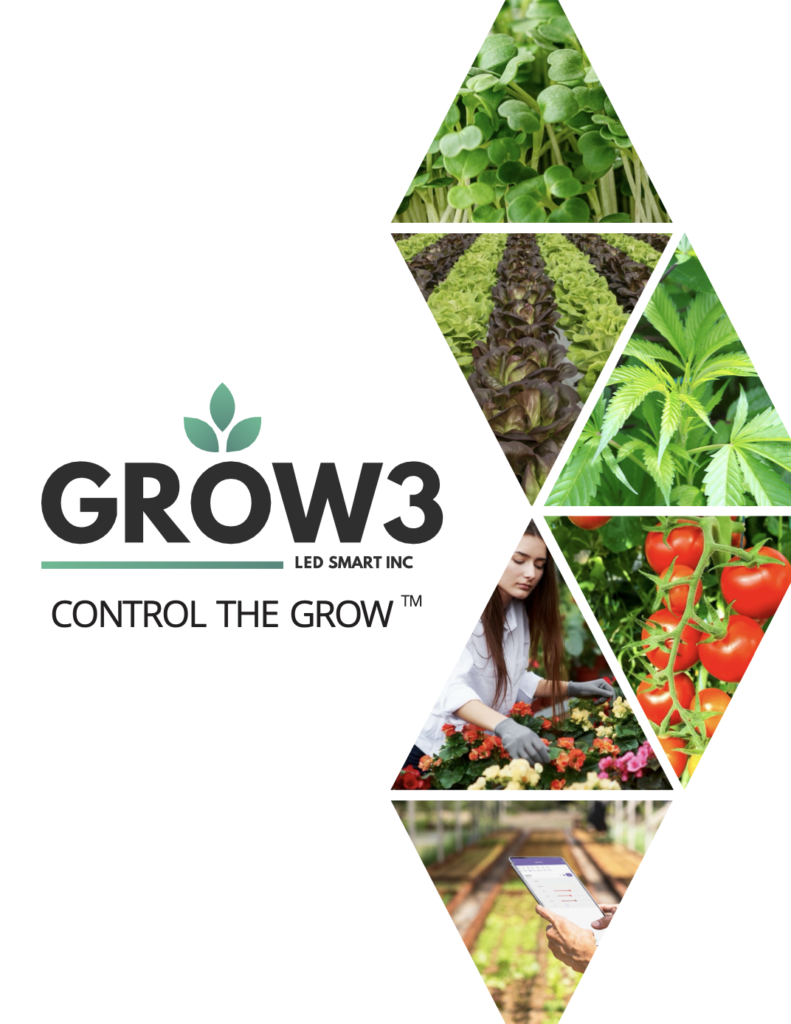WE ARE INNOVATIVE
- Home
- Products
- Application
- SmarTune™
- Resources
Grow3
CONTROL THE GROWTHNothing feels better than getting the results you were after.

- About Us
- Contact Us
Grow3
Nothing feels better than getting the results you were after.

Welcome to the world of microgreens, where small greens deliver ample nutrition and flavor. At GROW3, a division of LED Smart, we’re passionate about empowering urban gardeners and health enthusiasts with the tools and knowledge to cultivate microgreens successfully. Central to this pursuit is understanding the vital role of lighting, mainly LED grow lighting for microgreens, in the growth of these miniature greens.
The journey of a microgreens from a tiny seed to a lush, edible plant is fascinating and complex. Microgreens LED grow light is the driving force behind this transformation, playing a crucial role in photosynthesis, the process by which plants convert light into energy. This energy fuels the growth and development of microgreens, making lighting an essential consideration for any grower. Microgreen LED lights offer an ideal spectrum and intensity for optimal growth.
a) Observation is Key: Regularly check your microgreens. Look for signs of healthy growth, such as vibrant color and sturdy stems.
b) Adjust Lighting Accordingly: If the microgreens appear leggy or pale, they might receive insufficient light. Increase the duration or intensity of the lighting. Conversely, if they show signs of scorching or wilting, it might indicate too much light exposure.
c) Fine-Tuning: Pay attention to how different microgreens varieties respond to the lighting setup, as some may require slight adjustments for optimal growth.
a) Understanding the Cycle: Like all plants, microgreens follow a circadian rhythm. They need periods of light for photosynthesis and dark periods for respiration and other growth processes.
b) Setting a SmarTune Schedule: Aim for 12–16 hours of light daily. The rest should be dark, allowing the plants to rest and process nutrients.
c) Using Timers: Implementing SmarTune timers for your grow lights can help maintain a consistent light-dark cycle without manual intervention, ensuring your microgreens get the right amount of light and darkness each day.
a) Light Quality: Ensure that your grow lights for microgreens provide a full spectrum of light, which is most beneficial for plant growth.
b) Distance of Lights: Keep the lights at an optimal distance from the microgreens. Too close and they might burn; too far and they won't receive enough light.
c) Environmental Factors: Consider the ambient light in the room and seasonal changes that might affect the amount of natural light your microgreens receive.
In the quest for the perfect microgreens, lighting is about intensity and quality. LED grow lights provide a spectrum of light that encompasses all the colors necessary for healthy plant growth. This spectrum, particularly the blue and red wavelengths, is crucial for photosynthesis and plant health. LED lights also offer energy efficiency and longevity, making them a sustainable choice for indoor gardening. To harness the full potential of microgreens, it's essential to understand their specific light requirements. Here are some key factors to consider:
The best LED grow lights for microgreens offer a full spectrum, closely mimicking natural sunlight. This spectrum is essential for the photosynthetic process and overall plant health.
The journey of growing microgreens is a blend of science and art; the right lighting is a crucial piece of this puzzle. With GROW3’s LED solutions, you’re equipped to unlock the full potential of these nutrient-rich plants. Embrace the future of indoor gardening and join the green revolution with GROW3’s advanced microgreens lighting solutions.
Explore the future of indoor gardening with GROW3’s advanced microgreens lighting solutions. Start your green journey today!